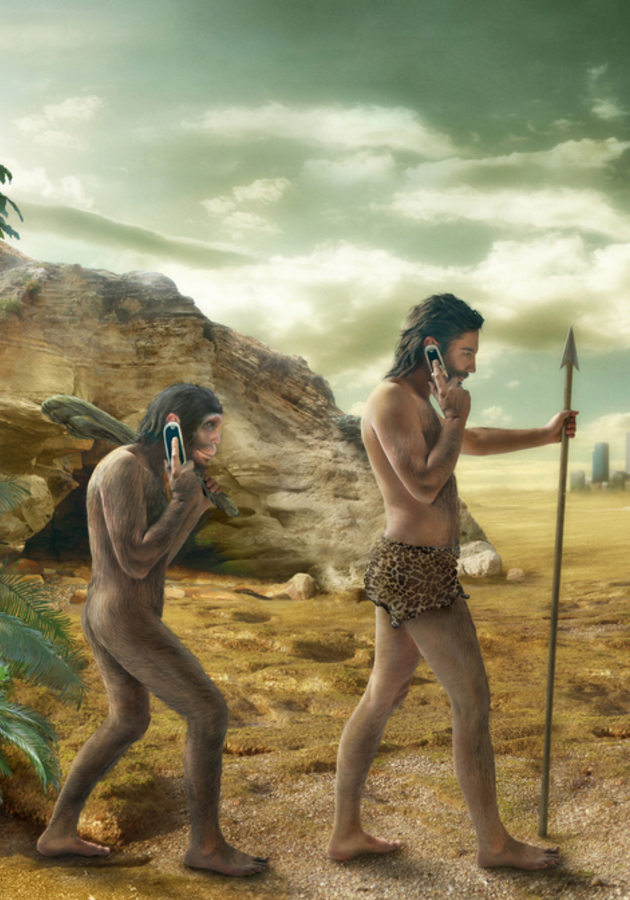When Charles Darwin published “On the Origin of Species” on November 24, 1859, he believed he had explained every clue – but one. In “Darwin’s Doubt,” Stephen C. Meyer – a philosopher of science and former geophysicist with a PhD from the University of Cambridge – focuses his entire attention on that one, unexplained clue, referred to by many modern thinkers as the mystery of the Cambrian Explosion. To Meyer, rather than a mystery, it is actually a yawning gap in Darwin’s theory of evolution, and one of such proportions that it can fit God within it. So, get ready to discover what Darwin couldn’t explain and what intelligent design can!
The watchmaker analogy
Imagine yourself crossing a heath and pitching your foot against a stone. Now, imagine asking yourself, quite casually, how the stone came to be there. For all intents and purposes, you’ll probably suppose the stone had lain there forever, and few would ever dare to question your assumption. Now, imagine – with William Paley, an 18th-century Christian apologist – pitching your foot against a mechanical watch and asking yourself how the watch happened to be in that place. Would you still be able to give the same answer as in the case of the stone?
Probably not – because, unlike the stone, the watch would seem, even at first glance, just too impeccable to have been created by chance. A closer inspection would merely make you more confident in your first assumption, as it would reveal to you that each part of the watch is there for a reason, and that the watch itself has a purpose as well. “There must have existed,” you’ll probably reason (again with Paley), “an artificer or artificers, who formed [the watch] for the purpose which we find it actually to answer; who comprehended its construction, and designed its use.”
Paley, of course, didn’t stop here. In his 1802 book “Natural Theology,” he went on to argue that as complex as a watch might be, living things are far more complex, so much so that some of them – such as humans – we can’t even comprehend. So, how could anyone suppose that they have been around ever since the beginning of time without supposing that someone has designed them? “Every indication of contrivance and every manifestation of design which exists in a watch,” Paley famously wrote, “exists in the works of nature; with the difference, on the side of nature, of being greater or more, and that in a degree which exceeds all computation.” Hence the fact that a watch cannot be created by chance should be evidence enough that animals and humans cannot be created by chance either.
Or can they? – a young English clergyman asked himself half a century after Paley. In 1857, he shocked the world with his final answer: not only they can, but moreover they actually have. That clergyman was, of course, Charles Darwin, and his final answer was a 500-page popular scientific work titled “On the Origin of Species.” Almost instantly, that work became the most important and controversial book in human history. In some ways, it still is.
Darwin’s dilemma
Ever since his adolescence, Charles Darwin was fascinated with selective breeding. Later in his life, he began breeding pigeons in his garden – not as a hobby, but as an experiment. He was trying to discover whether he could generate satisfactorily different types of pigeons by crossing birds with differing characteristics. Eventually, he did. By carefully sifting and selecting pigeons with desirable traits, Darwin produced “a dizzying variety of breeds” and concluded that probably all different types of pigeons and doves have evolved from one common ancestor – the ancient rock dove.
Darwin’s great insight was that, over long periods of time, Nature (in the form of environmental changes or other factors) could have the same effect on a population of organisms as the intentional decisions of an intelligent pigeon breeder. “If artificial selection could conjure so many strange breeds from a wild strain in a few centuries,” Darwin argued, “imagine what natural selection could achieve over many millions of years. […] Given enough time, favorable variations would gradually accumulate and give rise to new species and, given more time, even fundamentally new groups of organisms and body designs.”
There was one problem with Darwin’s theory – and he openly acknowledged it from the outset. Namely, during a geological period now known as the Cambrian (about 540 million years ago), the fossil record seemingly documented nothing less than the sudden appearance of many new and anatomically sophisticated creatures without any evidence of simpler ancestral forms. “If numerous species, belonging to the same genera or families, have really started into life all at once,” Darwin wrote in “The Origin of Species,” “the fact would be fatal to the theory of descent with slow modification through natural selection.”
Indeed, it would be – as Swiss-born paleontologist Louis Agassiz, of Harvard University, was quick to point out soon after the publication of Darwin’s book. If Darwin is right, argued Agassiz, and if evolution does indeed happen gradually over millions of years, “then we should find not just one or a few missing links, but innumerable links shading almost imperceptibly from alleged ancestors to presumed descendants.” But what about the brachiopods and the trilobites, two Cambrian creatures with complex anatomical designs such as tentacles and eyes? Why are they completely absent from the fossil records preceding them? “Where are the fossilized remains of their ancestral forms?” Agassiz asked Darwin.
Darwin didn’t have an answer. What he had, instead, was hope – an unfounded optimism that at some point in the future, such fossilized remains would be discovered by some scientist or an enthusiast. Well, they were – but they only proved Agassiz right in doubting Darwin.
The Burgess bestiary
What troubled Darwin is now known as the Cambrian Explosion, an event that happened approximately 541 million years ago, when practically all major animal phyla started appearing in the fossil record. In simpler terms, before the Cambrian Explosion, most organisms were relatively simple, either single-celled or small multicellular creatures occasionally organized into colonies. Then, in the span of just 10 to 20 million years – Meyer says even less – most present-day animal phyla appeared, and most animal organs evolved in a satisfactorily recognizable form. How did that happen? And why?
Darwin was still alive when Canadian workers, carving a path for the country’s first transcontinental railway, began noticing odd creatures in the rocks. After examining the rocks, an amateur geologist working for the railway announced that they held fossilized remains of the extinct and controversial trilobites. The word spread, so American paleontologist Charles Doolittle Walcott, long-time administrator of the Smithsonian Institution, went to investigate. On August 30, 1909, 27 years after Darwin’s death, he made a fascinating discovery – a shale filled with a variety of fossils that had never been seen before.
Known as the Burgess Shale, this rock was later dated to the middle Cambrian (meaning, it’s about 508 million years old) and is, to this day, the earliest fossil bed containing soft tissue, some of which is exceptionally preserved. What makes the Burgess Shale even more fascinating is that, rather than Darwin, it supports Agassiz’s criticism of Darwin. Put otherwise, the Burgess Shale preserves numerous complex animals and animal features with no evolutionary ancestors, and they are of such variety that the phrase “Cambrian explosion” is closely linked to the discovery of the shale.
“Darwin had hoped that later fossil discoveries would eventually eliminate what he regarded as the one outstanding anomaly associated with his theory,” explains Meyer. “Walcott’s discovery was not that discovery. Not only did the Burgess Shale fail to reveal the expected ancestral precursors of the known Cambrian animal forms, but it revealed a motley crew of previously unknown animal forms and body plans that now demanded their own lengthy chain of evolutionary precursors, only complicating the task of explaining the Cambrian explosion in Darwinian terms.”
Punctuated equilibria
Since 1909, evolutionists have made several attempts to discredit the problems posed by the Cambrian explosion and the Burgess Shale. Some of them have tried to minimize the diversity of the fossil evidence. Others have tried minimizing something else – namely, the radical nature of the leap from previous life the Cambrian fossil evidence seems to suggest. Yet a third group of scientists have surmised that environmental factors may have made it impossible for the soft-bodied ancestors of the Burgess Shale fauna to be fossilized. In other words, it’s likely that we’ll never find intermediary links between the simple Precambrian organisms and the complex trilobites, because they couldn’t have been preserved. How convenient.
Perhaps the most famous attempt to explain occurred in a series of scientific papers written by two heavyweights of science, Stephen Jay Gould and Niles Eldredge, and published between 1972 and 1980. In them, the two devised a new, non-Darwinian theory of evolution now known as “punctuated equilibria,” which hypothesizes that evolutionary development didn’t happen gradually, but was instead marked by isolated episodes of rapid speciation between long periods of little to no change. Gould and Eldredge’s theory suggests that the absence of fossilized ancestors of the Cambrian fauna can be explained by the fact that only stable species appear in the fossil record, not intermediary links which merely come and go. According to this theory, the Burgess Shale fauna is just an exception, a rock that has somehow preserved “evolutionary experiments” and “unique lineages” that became extinct almost as quickly as they appeared.
Essentially, what Gould and Eldredge did was redefine evolution anew, ironically while attempting to save it from inner contradictions and external refutations. Even so, in 1980, Gould could declare that Neo-Darwinism was “effectively dead, despite its persistence as textbook orthodoxy.” His alternative theory, however, hasn’t been confirmed by observations either. For example, as Meyer notes, “The Precambrian fossil record fails to preserve such a wealth of biological experiments during the long periods of relative stability in large populations that Gould’s theory envisions.” In other words, there should be even more Burgess Shales if evolution doesn’t happen gradually but in rapid spurts of speciation.
But as it is, there are merely a few rocks of similar nature and importance. And all of them suggest the same – that evolution, for all intents and purposes, was neither a long-term process nor a series of events. It was something far stranger: a single event, and one that occurred about 540 million years ago. Its name reflects its impact quite appropriately: the Cambrian explosion.
Four weaknesses
Unlike numerous modern scientists, Darwin was at least honest. On more than one occasion, he said that unless the fossil record can fill the gap between single-celled Precambrian fauna and the complex Cambrian trilobites then his “theory of descent with slow modification through natural selection” was not just inadequate, but utterly amiss. To this day, Darwin’s imaginary fossils haven’t been located anywhere on the planet. On the contrary, what we’ve found is even more fossils that question the validity of his theory and demonstrate the inadequacy of natural selection to explain the variety of life on Earth. According to Meyer, the fundamental Neo-Darwinian mechanism of evolution completely fails to account for the production of new genetic information due to at least four separate evidence-backed reasons:
- Lack of efficiency. “Natural selection,” claims Meyer, “has no means of efficiently searching combinatorial sequence space for functional genes and proteins.” In other words, given “the extreme rarity of functional gene and amino acid sequences among the corresponding space of total possibilities,” unguided random mutations simply wouldn’t have had enough time to produce the immense number of beneficial mutations in species that should have supposedly driven gradual progress. But that brings us to Meyer’s second critique.
- Lack of time. Neo-Darwinian evolution “requires unrealistically long waiting times to generate even a single new gene or protein.” How long, you wonder? Well, in 2009, two scientists, Rick Durrett and Deena Schmidt, examined the waiting time for a pair of simple mutations in fruit flies. They found that “generating the number of multiple coordinated mutations needed to produce even one new gene or protein is unlikely to occur within a realistic waiting time.” And we’re talking about fruit flies here! A similar type of change in humans, Durrett and Schmidt demonstrated, would take over 100 million years. As a reminder, the Cambrian explosion took only 10 million – and it somehow produced not just new genes, but such innovative designs as eyes, mouths, guts and spinal cords.
- Lack of benefits. Studying the effects of mutations on homeotic genes in fruit flies, William McGinnis and Michael Kurziora observed, in 1994, that “most mutations in homeotic genes cause fatal birth defects.” In other words, random mutations are neither efficient nor effective, since “early acting mutations, the only kind capable of generating large-scale changes, are also invariably deleterious.” Ahead of his time, Agassiz pointed this out as early as 1874, claiming, in an Atlantic Monthly essay, it was “a matter of fact that extreme variations degenerate or become sterile; like monstrosities, they die out.”
- Lack of complexity. Finally, Meyer writes, “Genetic mutations cannot, in any case, generate the epigenetic information necessary to build a body plan.” For example, he goes on, “the same gene (Pax-6 or its homolog, called eyeless), helps to regulate the development of the eyes of fruit flies (arthropods) and those of squid and mice (cephalopods and vertebrates, respectively). Yet arthropod eyes exemplify a completely different structure from vertebrate or cephalopod eyes.” This pattern of “same genes, different anatomy” contradicts Neo-Darwinism and yet, has been observed everywhere throughout the animal kingdom. How? Allow us to answer that question in the next, final section of our summary.
What’s at stake
The feature of genetic polyfunctional modularity – namely, same genes being able to acquire different functions depending on the context – is a feature “explicitly unexpected” by the orthodox theory of evolution, according to none other than Gould. It is, however, explicitly expected by another theory – that of intelligent design. Consider a general-purpose transistor. In a differently designed system, it can be used to perform different functions, much like the Pax-6 genes in the bodies of fruit flies and mice respectively. But how does the transistor know which function to serve in the given system? It doesn’t, of course. The one who knows is the human designer who employs it in a car radio or a computer.
So, we’re back to Paley’s watchman analogy. Genes, organs, and animals seem just too complex and too fit for purpose to have evolved randomly, without an understanding of the context. Moreover, the fossil record is adamant in suggesting that most of what we term “evolution” actually occurred during a very brief period of geological time, possibly as brief as 6 million years. Meyer's main claim is that the rapid diversity that occurred during this period, known as the Cambrian Explosion, can only be explained through the theory of intelligent design, and not by normal evolutionary mechanisms, regardless of whether they speak of gradual progression or rapid spurts of speciation.
But there’s another thing that Meyer is interested in and science usually isn’t – meaning. He realized that when, in the summer of 2002, he joined a group of geologists and geophysicists on a hiking trip to the Burgess Shale. His eleven-year-old son was with him. At one point, as the group was making their ascent, Meyer heard his otherwise fearless son unexpectedly calling out to him from the front of the group, with an uncharacteristically trembling and timorous voice. When Meyer caught up with him, he noticed that he was locked in place, pale and wide-eyed, experiencing some kind of vertigo. Apparently, he had peered down the mountainside and saw nothing but emptiness. Not able to make sense of the facts, he could do nothing else but call out for his father.
Much later it occurred to Meyer how closely his son’s experience paralleled that of humankind in general. “To gain a true picture of the world and our place in it,” he explains, “we need facts – empirical data. But we also need perspective, sometimes called wisdom, the reference points that a coherent view of the world provides. Historically, that wisdom was provided for many men and women by the traditions of Western monotheism – by our belief in God. The theory of intelligent design generates both excitement and loathing because, in addition to providing a compelling explanation of the scientific facts, it holds out the promise of help in integrating two things of supreme importance – science and faith – that have long been seen as at odds.”
Final notes
Beautifully written and heavily referenced, “Darwin’s Doubt” has been described as “a truly remarkable book,” “a tour de force” and even as “a much–anticipated bombshell” by several professors and academicians, most of them Christians and proponents of the intelligent design theory. However, as Gareth Cook wrote in “The New Yorker,” even respected paleontologists and evolutionary biologists shouldn’t underestimate “Darwin’s Doubt.”
Indeed, they haven’t, but all of them seem to agree quite straightforwardly with Cook that Meyer’s book is actually “a masterwork of pseudoscience,” as biased and selective in interpreting the evidence that underlies it as it is gripping and compelling in presenting the interpretation. Perhaps the biggest problem with Meyer’s book is his “god of the gaps” approach as he often assumes an act of God as the only possible explanation for unknown phenomena. In a way, he even admits this in the last paragraph of the book.
The truth is there is a lot that scientists don’t know about how complex life evolved. Even though Meyer is quite good at pointing out these gaps (even when he is selective), he is actually very biased when he tries to explain them, sometimes even going so far to misrepresent scientific findings to fit his worldview. That is not science, but “prior belief trumping scholarship,” as paleontologist Charles Marshall pointed out in a review for Science. Coincidentally – at least in our opinion – that is the best description of “Darwin’s Doubt.”
12min tip
Read books by people you disagree with. Not only will you become more informed that way, but you will also be able to refine your values. And who knows? You may even change your mind! That’s not bad. It’s actually a hallmark of growth.





























